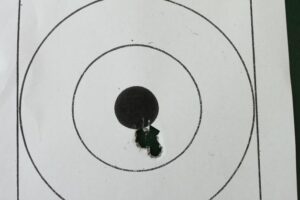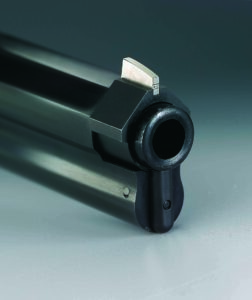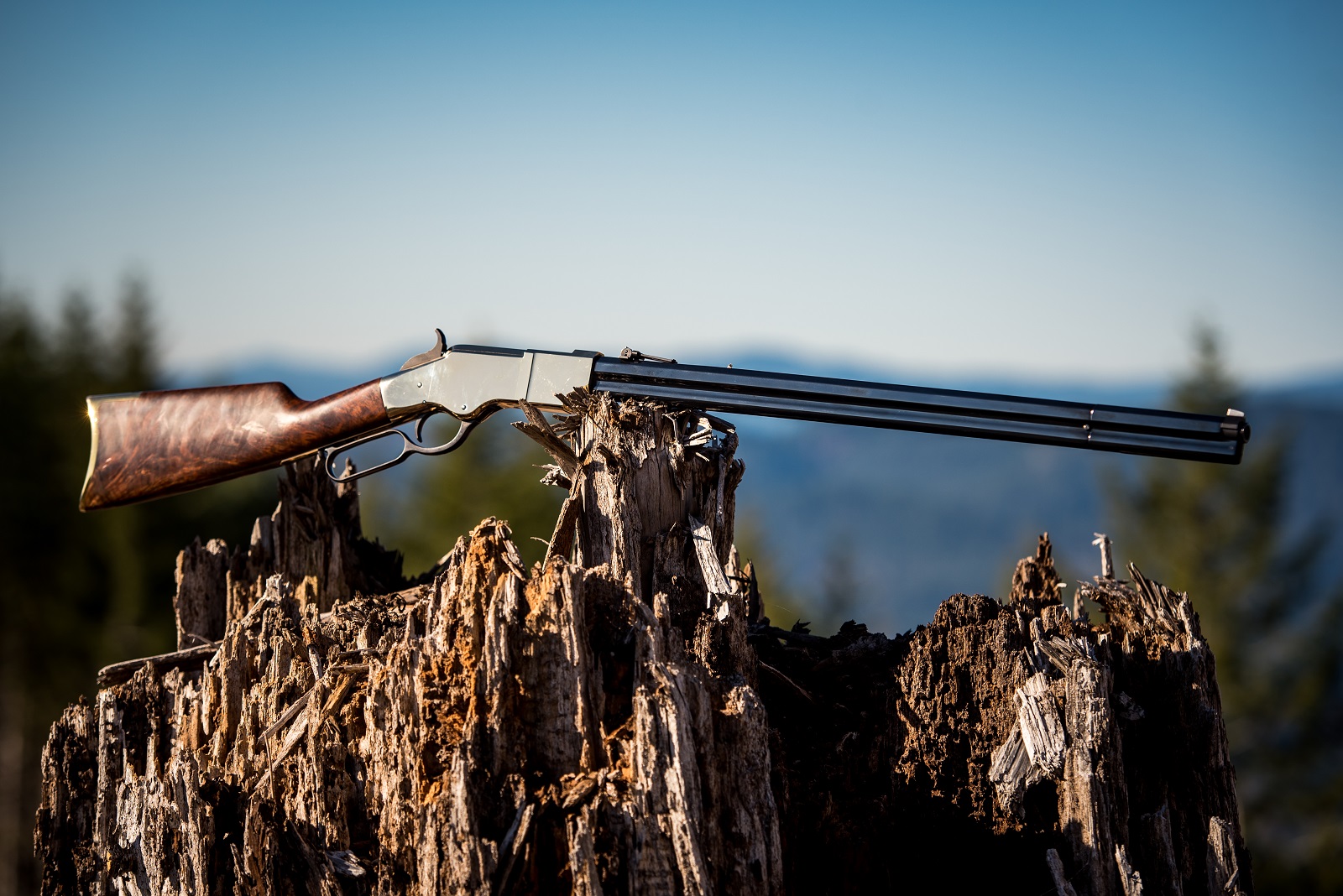
By Jim Dickson | Contributing Writer
The 1860 Henry Repeater is back and it’s better than ever, made of the best modern materials and chambered for the potent .45 Colt cartridge now.
Made by the modern Henry Repeating Arms company this beauty is made identical to the original except for caliber. There wasn’t any point in making it in .44 rimfire when there is no source for new .44 rimfire ammo.
The original was the first successful lever action for Oliver Winchester. Previously he had built the Volcanic lever action which had been a flop because of poor ammunition design in one of the first self-contained cartridges. His plant superintendent, B. Tyler Henry, developed the .44 rimfire cartridge and adapted the design to it. The new gun was named the Henry repeater in his honor.
Like anything ahead of its time, the Henry met with a lot of sales resistance. Commercial sales slowly began and later there were also sales to the Federal army. Quantities of privately purchased and captured Henry repeaters were also used by the South. U.S. Army Ordnance was horrified at anything that utilized a lot of ammunition in a hurry. They were still traumatized from the logistical problems encountered in supplying powder and ball during the 1776 War for Independence. They looked on the complicated repeating rifle mechanism with a jaundiced eye and they never did adopt a lever action as the standard army rifle.
The workmanship of the new Henry far exceeds that of the originals. Everything is mirror polished inside and out. The action works like greased glass. In fact, this gun is so highly polished that it is the most difficult gun to photograph that I have ever worked with. It is like trying to take a picture of a mirror without showing what the mirror is reflecting.
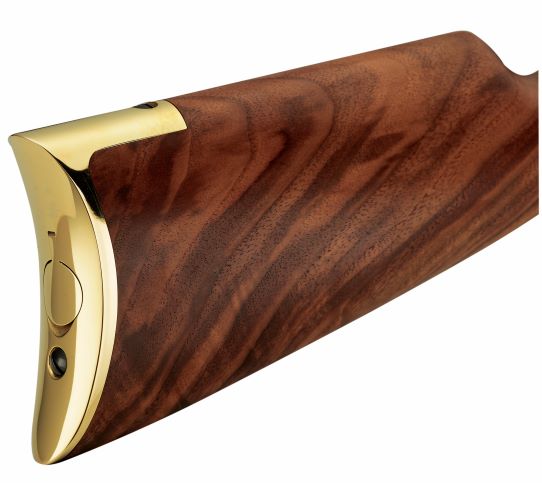
The stock has an attractive grain and the brass butt plate has a trapdoor in it like a M1903 Springfield. Flipping it open reveals a ¾-inch wide by 7 5/8-inch deep hole that will accommodate a M1903 Springfield oiler and pull through. These may be modern but they fit and are sure handy to have when you need them.
The mirror polished brass receiver is strikingly beautiful. With its 1860 looks this rifle really sets a room off when it graces a wall or a mantel.
There is no forend, which requires the shooter to grip the barrel and this definitely aids accurate aiming. (It can also be hard to handle when the barrel heats up from repeated, fast shooting.—ed.)
This gun comes up fast and the sights align effortlessly on the target. Trigger pull is perfect. Shooting it is like firing a .22LR. The 9-pound 4-ounce rifle soaks up every bit of the felt recoil and the 24-inch octagonal barrel dampens the noise down close to that of a .22LR. You still need hearing protection when firing though just as you do with a .22LR. This is one more fun gun to shoot. I had 580 rounds to try it out with consisting of 250 rounds of Black Hills 250-grain cowboy loads, 80 rounds of Hornady 255-grain cowboy loads, and 200 rounds of Remington 225-grain lead SWC Performance Wheelgun loads.
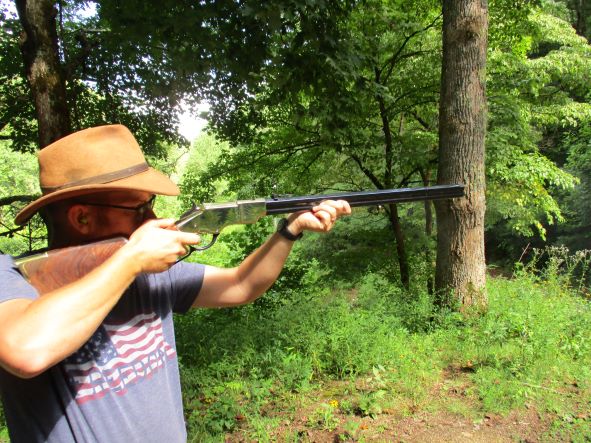
Firing offhand at 50 yards I got consistent 7/8-inch and 1-inch groups. That’s plenty good for hunting. This is one more fun gun to shoot. Loading was easier than the modern lever actions with the King’s Patent Loading Gate. You move the magazine follower up as far as it will go towards the muzzle snapping it in sharply at the end while turning the barrel sleeve to the left. Now just drop the cartridges down the magazine tube base first until it is full. Press up hard on the magazine follower and twist the barrel sleeve to the right and you are ready to go. It won’t chew up your thumb on sharp edges like some modern lever actions with the King’s Patent Loading Gate will. Of course the big advantage of the King’s Patent Loading Gate is that it can be constantly topped off while you are firing. That could be real important on the frontier when the Indians were attacking. Also, the Model 1860’s magazine tube is slotted down the middle so you can move the magazine plunger for loading. This also lets you see the cartridges in the magazine and know at a glance how many shots you have left. Unfortunately, it also could admit dirt and trash. The adoption of the King’s Patent loading gate in the later Winchesters enabled this slot to be closed and the expensive turning barrel sleeve to be eliminated.
As the gun is fired, the magazine follower retreats towards the receiver and at some point you have to move your hand around it. This is not an issue or the slightest problem in practice.
There is a good blade front sight and a patridge rear sight that flips up like a proper military sight of the period. It is adjustable in hundred-yard increments to 800 yards and there is a notch at the top if you need just a bit more range.
The .45 Colt cartridge is fully capable of some impressive long range accuracy if you have the sights set at the correct range. If you aren’t good at estimating ranges today’s hunter can utilize a laser rangefinder. Back when this gun was state of the art, men were more practiced at estimating ranges because the flat trajectory rifle was a dream for the future.
This is a far better rifle than the originals as it is better made with better materials and it is chambered for a more powerful caliber. I would much rather have this gun than an original.
That brings us to another question. What do you use this gun for? In a word, everything.
The .45 Colt was developed for the army to fulfill a requirement for a cartridge that would quickly and efficiently kill a cavalryman’s horse at 100 yards or stop a charging cavalry horse. When it came out the U.S. Cavalrymen were trying to eliminate the Indian’s larder by exterminating the great herds of buffalo in the West. Cavalrymen thought it great sport to ride alongside the buffalo and kill them with their .45 Colt revolvers.
As a bear protection pistol cartridge it served with distinction until magnumitis brainwashed folks into thinking nothing without the magnum name after the caliber would kill a bear. Nothing could be further from the truth and a man with a .45 Colt will not only be able to kill the biggest bear efficiently he will be able to shoot it faster than a heavy recoiling magnum and most men can shoot the .45 pistol more accurately as well.
Now stop to consider that this round fired through a 24-inch rifle barrel and picking up some impressive velocity gains. It is a .451-inch diameter bullet compared to the .429-inch diameter of a .44. It is also a heavier bullet. Now while the .44 rimfire worked well on game the improved .44-40 centerfire that replaced it killed more game of all types in North America than any cartridge since then simply because it was there at the right place and time in history.
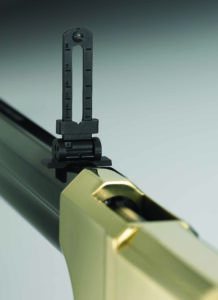
The .45 Colt is also more powerful than the famed .44-40. As long as you are in this hemisphere there is nothing that you can’t kill efficiently with this .45 Colt rifle. Best of all it is a true subsistence hunter’s meat getter. It will kill small game without ruining a lot of meat yet it still will put down a moose or grizzly. For deer hunting you have the extra knockdown power of a .45 and since most deer are actually killed inside 100 yards, there is no reason not to use this on deer. There are significant reasons to use it on deer though. The Henry has no more recoil than a .22LR, so the shooter will not be bothered by flinching and he is also likely to practice more with it simply because it is so much fun to shoot. In other words, he is more likely to hit what he is aiming at.
Many people will shoot far better with this rifle than even a .30-30 or a .30-06. Lack of recoil and improved accuracy is one reason that even in the 1970’s the only cartridge that you could always be sure of finding at some remote Canadian trading posts was the .44-40.
The ability to take both small and big game with the same gun was the other big reason. When you are a subsistence hunter that is the most important consideration unless you like missing meals.
While I didn’t have any of it to test with this gun there is one load that I must mention, the Hornady LeverEvolution 225-grain .45 Colt with the plastic tip giving it the shape of a fat spitzer bullet without any risk of the sharp point setting off the primer of the cartridge in front of it in a tubular magazine. This was developed to get better performance of the .45 Colt round in lever action rifles. Its improved ballistic shape enables it to retain its velocity far better than traditional blunt pistol bullet shapes. It chronographs at 1,150 FPS out of a 20-inch barrel and should be somewhere around 1,225 FPS in the 24-inch Henry barrel.
Some will wonder why the lever action rifles were not made in .45 Colt originally. The answer is simple. Designed originally as a round for the Colt Single Action with a push rod ejector, the early .45 Colt rounds lacked a big enough rim to reliably function in a lever action. When the Army wanted the double action Colt New Service revolver in .45 Colt for the Philippine Insurrection, the resulting Model 1909 Revolver featured a .45 Colt round with as big a rim as would fit in a New Service revolver’s cylinder. As the New Service cylinder was larger than the cylinder of the earlier Colt Single Actions, the 1909 ammunition could only be loaded in every other chamber in the single actions. Not too long after this the ammunition manufacturers started making the .45 Colt round with the maximum size rim that would work in the single actions. Unfortunately, it was only in recent years that the makers of lever action rifles took advantage of their new ability to chamber the .45 Colt in their rifles.
I regard this 160-year-old design as still being a first rate hunting rifle that has a lot to recommend it over many more modern rifles. Add the extremely fine fit and finish that is hard to match in today’s production rifles and you have another reason to take this highly decorative rifle off the wall and use it to go get dinner.

